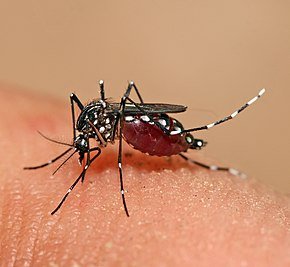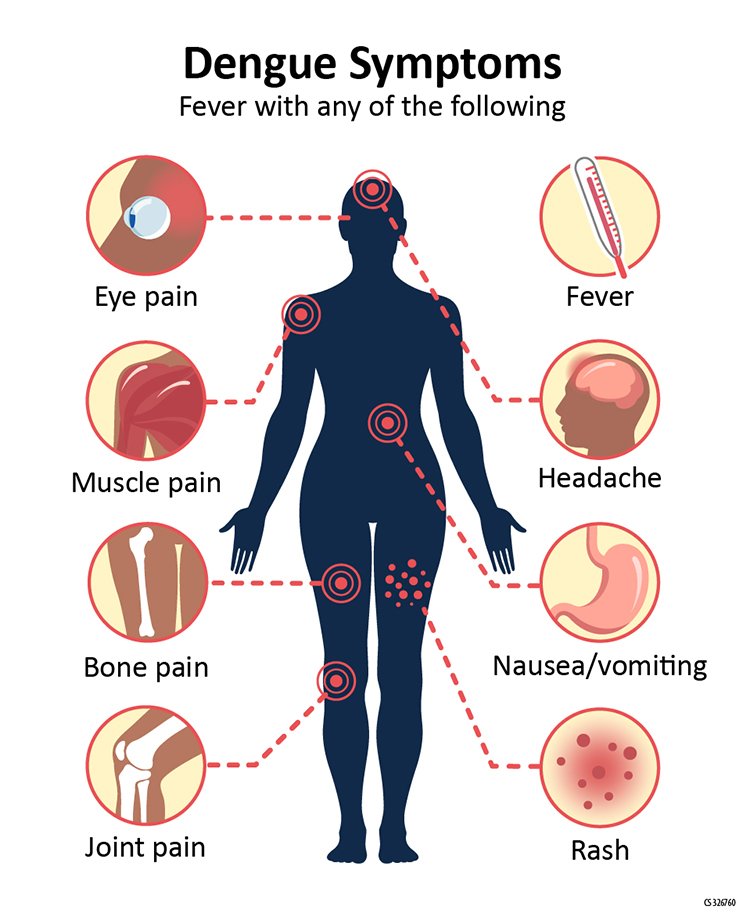Unmasking Dengue Fever: A Silent Menace

Introduction
Dengue fever, often referred to as “break-bone fever,” is a viral infection transmitted through the bite of infected mosquitoes. While a significant portion of those infected with dengue may remain asymptomatic, for those who do exhibit symptoms, the hallmark signs typically include a soaring fever, severe headaches, body aches, nausea, and the development of a distinct rash. This seemingly benign list of symptoms can be deceptive, as dengue has the potential to rapidly escalate into a life-threatening condition. As the geographical reach of Aedes mosquitoes, the primary vectors of dengue, expands due to global travel and climate change, the threat of dengue looms larger than ever. In this article, we will delve into the depths of dengue fever, exploring its causes, symptoms, prevention, and the ongoing battle to control its spread.
Signs and Symptoms of Dengue Fever
Dengue fever, often referred to as “break-bone fever,” can present a range of signs and symptoms, which may vary in severity from person to person. It’s essential to recognize the early indicators, as prompt medical attention can make a significant difference in the outcome. Here are the common signs and symptoms of dengue fever:
- High Fever: The hallmark of dengue fever is a sudden and high fever, often reaching up to 104°F (40°C). This fever typically comes on suddenly and is one of the early warning signs.
- Severe Headaches: Intense and persistent headaches are a frequent symptom of dengue. These headaches can be debilitating and are often described as one of the most painful aspects of the disease.
- Pain Behind the Eyes: Many individuals with dengue experience pain, discomfort, or a sensation of pressure behind the eyes. This eye pain can be a distinctive feature of the disease.
- Muscle and Joint Pains: Dengue fever is often associated with severe muscle and joint pains. These pains can be so severe that they lead to the disease’s colloquial name, “break-bone fever.”
- Nausea and Vomiting: Nausea and vomiting are common symptoms, often accompanied by a loss of appetite. These gastrointestinal symptoms can contribute to dehydration.
- Swollen Glands: Some individuals with dengue may experience swollen lymph nodes or glands, particularly around the neck and groin areas.
- Rash: A distinctive rash may develop on the skin. This rash can vary in appearance but often presents as small, red or pink spots. It typically appears a few days after the onset of fever and can spread across the body.
While the majority of dengue cases exhibit these symptoms, the disease’s deceptive nature lies in its potential to rapidly progress to a more severe form, known as severe dengue or dengue hemorrhagic fever. If you or someone you know experiences the following symptoms, it’s critical to seek immediate medical attention, as severe dengue can be life-threatening:
- Severe Abdominal Pain: Individuals with severe dengue often experience intense abdominal pain, which can be a sign of complications like plasma leakage.
- Persistent Vomiting: Continuous vomiting, especially if it is severe and accompanied by blood, is a concerning symptom that requires immediate medical evaluation.
- Rapid Breathing: An abrupt increase in breathing rate, often accompanied by shortness of breath, is an alarming sign of severe dengue.
- Bleeding Gums or Nose: Bleeding from the gums or nose can be an indication of severe dengue. This bleeding may also manifest as petechiae, small red or purple spots on the skin.
- Fatigue and Restlessness: Severe dengue can lead to profound fatigue and restlessness, indicating a worsening condition.
- Blood in Vomit or Stool: The presence of blood in vomit or stool is a critical sign of severe dengue and should be evaluated immediately.
- Thirst and Dehydration: A persistent feeling of extreme thirst and signs of dehydration, such as dark urine, can be associated with severe dengue.

It’s important to note that individuals who have previously been infected with one serotype of the dengue virus are at a greater risk of developing severe dengue if they are infected with a different serotype in the future. Therefore, understanding the signs and symptoms of dengue and seeking prompt medical care are essential in managing this potentially life-threatening disease.
Understanding Dengue Fever
Dengue fever is caused by the dengue virus (DENV), which exists in four distinct serotypes—DEN-1, DEN-2, DEN-3, and DEN-4. These serotypes are related but not identical, which means that individuals can be infected multiple times, each time by a different serotype. This is where dengue becomes particularly menacing, as a second infection by a different serotype can lead to a more severe form of the disease known as dengue hemorrhagic fever.
The Global Burden of Dengue
The incidence of dengue has grown dramatically worldwide in recent decades, with cases reported to the World Health Organization (WHO) increasing from 505,430 cases in 2000 to 5.2 million in 2019. It’s important to note that a vast majority of dengue cases are asymptomatic or mild, leading to underreporting. Dengue is now endemic in over 100 countries across the world, with the Americas, South-East Asia, and the Western Pacific regions being the most severely affected. In addition, dengue is spreading to new areas, including parts of Europe.
Transmission of Dengue
The dengue virus is primarily transmitted to humans through the bites of infected female mosquitoes, primarily the Aedes aegypti mosquito. While other species within the Aedes genus can also act as vectors, Aedes aegypti is the primary culprit. After feeding on a DENV-infected person, the virus replicates in the mosquito’s midgut before disseminating to secondary tissues, including the salivary glands. The time it takes from ingesting the virus to actual transmission to a new host is termed the extrinsic incubation period (EIP). The EIP typically lasts about 8–12 days, with variations influenced by factors like temperature, virus genotype, and initial viral concentration. Once infectious, the mosquito can transmit the virus for the rest of its life.
Modes of Transmission
Dengue can be transmitted in various ways:
- Transmission through the mosquito bite: This is the primary mode of transmission, with the Aedes mosquito spreading the virus when it bites an infected person.
- Human-to-mosquito transmission: Mosquitoes can become infected by biting people who are viremic with DENV. This includes symptomatic, pre-symptomatic, and asymptomatic individuals. The risk of mosquito infection is associated with high viremia and high fever in the patient.

- Maternal transmission: While rare, there is evidence of maternal transmission from a pregnant mother to her baby. Babies born to mothers with DENV infection may suffer from pre-term birth, low birthweight, and fetal distress.
- Other transmission modes: Dengue has been recorded to be transmitted via blood products, organ donation, transfusions, and even through transovarial transmission within mosquitoes.
Risk Factors
Several risk factors contribute to the prevalence and transmission of dengue. Previous infection with DENV increases the risk of severe dengue, particularly when the individual is infected with a different serotype on subsequent occasions. Urbanization, especially in unplanned areas, plays a significant role in dengue transmission due to factors like population density and water storage practices. Community risks depend on factors such as population knowledge, attitudes, and practices related to dengue, as well as the implementation of sustainable vector control activities.
Prevention and Control
Preventing dengue primarily focuses on reducing mosquito populations and protecting individuals from mosquito bites. The mosquitoes that transmit dengue are active during the day, so protection measures include wearing long-sleeved clothing, using mosquito nets (ideally treated with insect repellent) during daytime sleep, installing window screens, and applying mosquito repellents containing DEET, Picaridin, or IR3535.
In cases where individuals contract dengue, management revolves around rest, hydration, and the use of acetaminophen (paracetamol) to control pain and fever. Non-steroidal anti-inflammatory drugs like ibuprofen and aspirin are avoided, as they can increase the risk of bleeding.
A dengue vaccine called Dengvaxia is available for individuals with a history of dengue infection living in areas where the disease is common. However, this vaccine has limitations and is not universally recommended. Several other dengue vaccine candidates are currently under evaluation.
The Ongoing Battle
Despite ongoing research, the development of an effective dengue vaccine has faced numerous challenges. Dengvaxia is the only dengue vaccine currently available, and its use is limited. Researchers continue to explore more effective vaccine candidates and antiviral treatments to combat the disease, with the goal of improving prevention and treatment methods for this potentially deadly disease.
Conclusion
Dengue fever remains a significant global health concern, with millions of cases reported each year. The expansion of Aedes mosquitoes’ geographical reach and the challenges in developing an effective vaccine highlight the urgency of controlling the spread of this disease. Public health initiatives, vector control, and ongoing scientific research are crucial components of the ongoing battle against dengue. Raising awareness and maintaining vigilance are essential in the fight against this elusive and potentially deadly illness

1 Comment